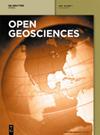科索沃自然多样性与旅游业的相互关系
IF 1.7
4区 地球科学
Q3 GEOSCIENCES, MULTIDISCIPLINARY
引用次数: 0
摘要
一个地方、地区或州丰富的动植物资源是地理自然旅游资源的重要组成部分。旅游路线主要集中在植物种类繁多、植被丰富和动物世界多样的地区。巴尔干半岛,尤其是科索沃,具有高度的地理多样性和生物多样性价值。这一特点可以成为科索沃重要的娱乐和旅游潜力,从而促进旅游业的可持续发展。因此,本文论述了自然多样性的内容、受保护的地理和生物多样性价值的规模和引入时间,最重要的是,本文提出了这些是否有助于提高当地和外国游客的旅游积极性的论点。研究采用了定量和定性两种方法,后者在科索沃缺乏正式数据收集和旅游管理系统的情况下更为有效。根据官方统计,科索沃的保护区约占总面积的 12%(2021 年)。在过去的 20 年里(2021 年),保护区面积大幅增加(8%),从 2003 年的 4.26% 增加到 12.25%。研究表明,这一理想的代表性水平并未吸引足够的游客。此外,研究还认为,需要立即改革政策,以管理国家的自然多样性价值。为了实现这一目标,政府必须采取更加全面的措施,对保护区进行更加复杂的管理,其中与旅游业的互动是一个关键问题,而不仅仅是迄今为止的一个简单问题。本文章由计算机程序翻译,如有差异,请以英文原文为准。
The interrelation of natural diversity with tourism in Kosovo
The plant and animal wealth of a place, region, or state represents a significant component of the geographic-natural tourist offer. Tourist routes are concentrated specifically on areas with a variety of plants, rich vegetation, and diverse animal world. The Balkan Peninsula in general, and Kosovo in particular, is characterized by high geodiversity and biodiversity value. This feature can serve as an important recreational and tourism potential for Kosovo and, consequently, in sustainable tourism development. For this reason, this article deals with the content of natural diversity, the size and time of introduction of geo and biodiversity values under protection, and, above all, it brings arguments if the same contributed to the increase of tourist motivation for local and foreign tourists. Results were achieved using both quantitative and qualitative methods, with the latter being more effective in the lack of the formal system of data collection and tourism management in Kosovo. According to official statistics, protected areas (PAs) of Kosovo occupy roughly 12% of the total area (2021). There was a significant rise (8%), from 4.26 to 12.25% in 2003 in the last 20 years (2021). The study shows that this desirable level of representation did not attract enough tourists. Furthermore, it is argued that immediate reformation of policies is required for the management of natural diversity values of the country. In order to achieve this, the government must implement more comprehensive measures in order to manage PAs more intricately, where the interaction with tourism is a key issue and not just a simple one, as it has been up until now.
求助全文
通过发布文献求助,成功后即可免费获取论文全文。
去求助
来源期刊

Open Geosciences
GEOSCIENCES, MULTIDISCIPLINARY-
CiteScore
3.10
自引率
10.00%
发文量
63
审稿时长
15 weeks
期刊介绍:
Open Geosciences (formerly Central European Journal of Geosciences - CEJG) is an open access, peer-reviewed journal publishing original research results from all fields of Earth Sciences such as: Atmospheric Sciences, Geology, Geophysics, Geography, Oceanography and Hydrology, Glaciology, Speleology, Volcanology, Soil Science, Palaeoecology, Geotourism, Geoinformatics, Geostatistics.
 求助内容:
求助内容: 应助结果提醒方式:
应助结果提醒方式:


